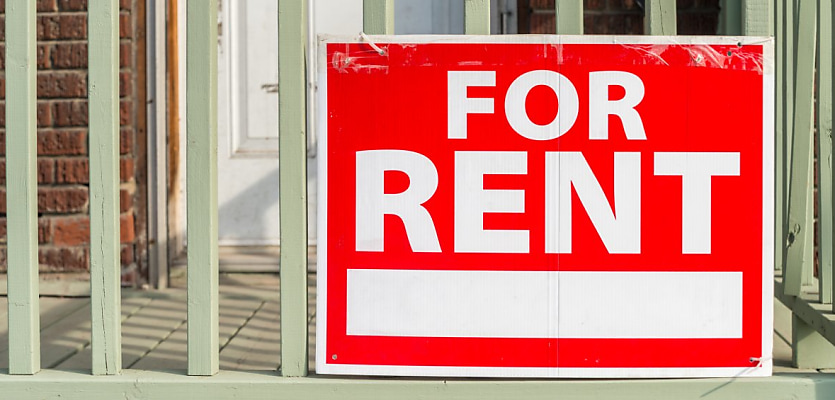As the screws continue to tighten on the country’s rental market, a new report showed tenants entering into new tenancy agreements are paying rents higher than the advertised price to secure a home.
The joint report from the Australian Bureau of Statistics (ABS) and the Reserve Bank of Australia (RBA) titled New Insights into the Rental Market showed that while “larger rent increases are becoming more common for all properties”, on average, “rent increases for properties with a new tenant have tended to be larger”.
In February, more than 60 per cent of properties with new tenants had rents that were more than 10 per cent higher than a year earlier. On one hand, just a quarter of properties with existing tenants experienced rent increases of more than 10 per cent.
In capital cities, rent rises have also become “larger and more common for most properties”, the report noted.
In the last year, rent prices have increased for nearly 75 per cent of rental properties, a significant jump from the pre-pandemic rate of around 25 per cent.
The report was based on data from MRI Property Tree, which goes back as far as July 2018 and currently covers about 600,000 rental properties across regional and capital city areas, representing 32 per cent of the national 2021 Census rental dwelling stock.
It included an index that captured the discrepancy between advertised rents and actual rents paid during the period, noting that “rents paid by new tenants provide a leading indication of price developments in the total stock of rental properties.”
“Previously, the best available indicator of rents paid by new tenants was advertised rents; however, this may not be the most useful measure because the actual rent agreed to by a landlord and a new tenant may be different from the advertised amount,” the report explained.
Actual rents paid by new tenants increased by 14 per cent in the 12 months to February, which is 9 per cent higher than the rise in the monthly CPI indicator rent index that captures rents paid by both new and existing tenants.
Since the pandemic’s emergence in 2020, renters entering new leases have faced a sharp 24 per cent hike in rental payments, while the CoreLogic rent series — a metric that measures advertised rental rates — has seen a comparable 22 per cent increase.
In the early days of the COVID-19 pandemic, particularly in mid-to-late 2020, the report showed actual rents agreed between landlords and tenants tended to be lower than the advertised amount.
During this period, the report noted rents fell in many suburbs close to central business districts but rose in regional areas, driven by a preference shift among many households for “more space and net population flows”.
As a result, the report highlighted a divergence in rent inflation between capital cities and regional areas. Rents increased the most in regional areas furthest from a capital city, while some capital cities experienced a decline due to high rental property supply and weak demand caused by travel restrictions and lower population growth.
But as travel restrictions and health concerns brought on by the pandemic eased and the trend of living further away from city centres reversed, the ABS observed a tightening of the rental market, particularly in capital cities.
In the middle of 2021, data showed a significant proportion of new renters have been facing steeper rental fees compared to the previous year’s charges for the same property.
This trend has become more prominent, the ABS said, with the percentage of such cases surging to 94 per cent in February 2023, in contrast to the 71 per cent of rental properties occupied by existing tenants where the rent has remained steady.
“More recently, the return of international migration — and, in particular, the return of international students — has added to demand for rental properties in the major cities.
“Advertised rents have grown strongly and finding a suitable rental property has become more difficult as vacancy rates have declined,” the report said.
As a result, the report observed that rents paid by new tenants have risen “because the actual rent agreed between landlords and tenants has been higher on average than the advertised amount”.
The rise of rental bidding
With several Australian cities grappling with a rental crisis thanks to record-low vacancy rates, the practice of rental bidding, which involves prospective renters offering a bit extra on top of the advertised price for a rental property, has become a more appealing option for desperate tenants if it means securing a roof over their heads.
While laws attempting to limit rent bidding vary across states, there are prevailing concerns that these measures don’t go far enough in preventing the practice.
In NSW, the move late last year by then-Premier Dominic Perrottet to ban rental bidding was criticised by REINSW as unfairly impacting both investors and the industry, while acting as somewhat of a red herring to distract from what the institute described as the real problem: the government’s inaction on supply.
Notably, the Labor party, which won the state’s election following the 25 March vote, has pledged a policy that if any renter wants to offer more than the listed price, that offer must be disclosed to all applicants so they have a “chance to match the offer”.
In South Australia, the Malinauskas government announced on 15 March its plans to ban the practice as part of its targeted reforms to the Residential Tenancies Act, which are set to be introduced to parliament.









You are not authorised to post comments.
Comments will undergo moderation before they get published.